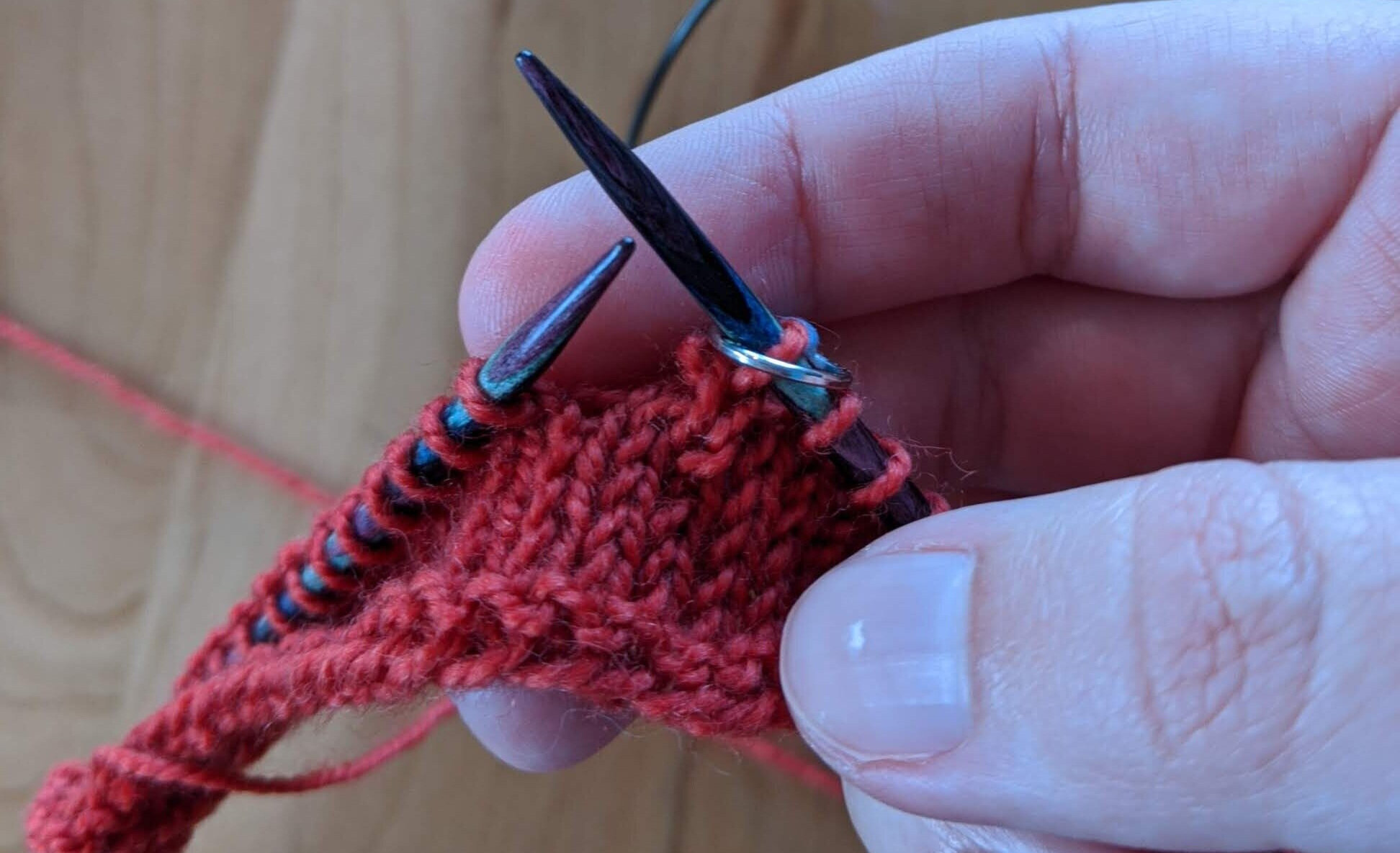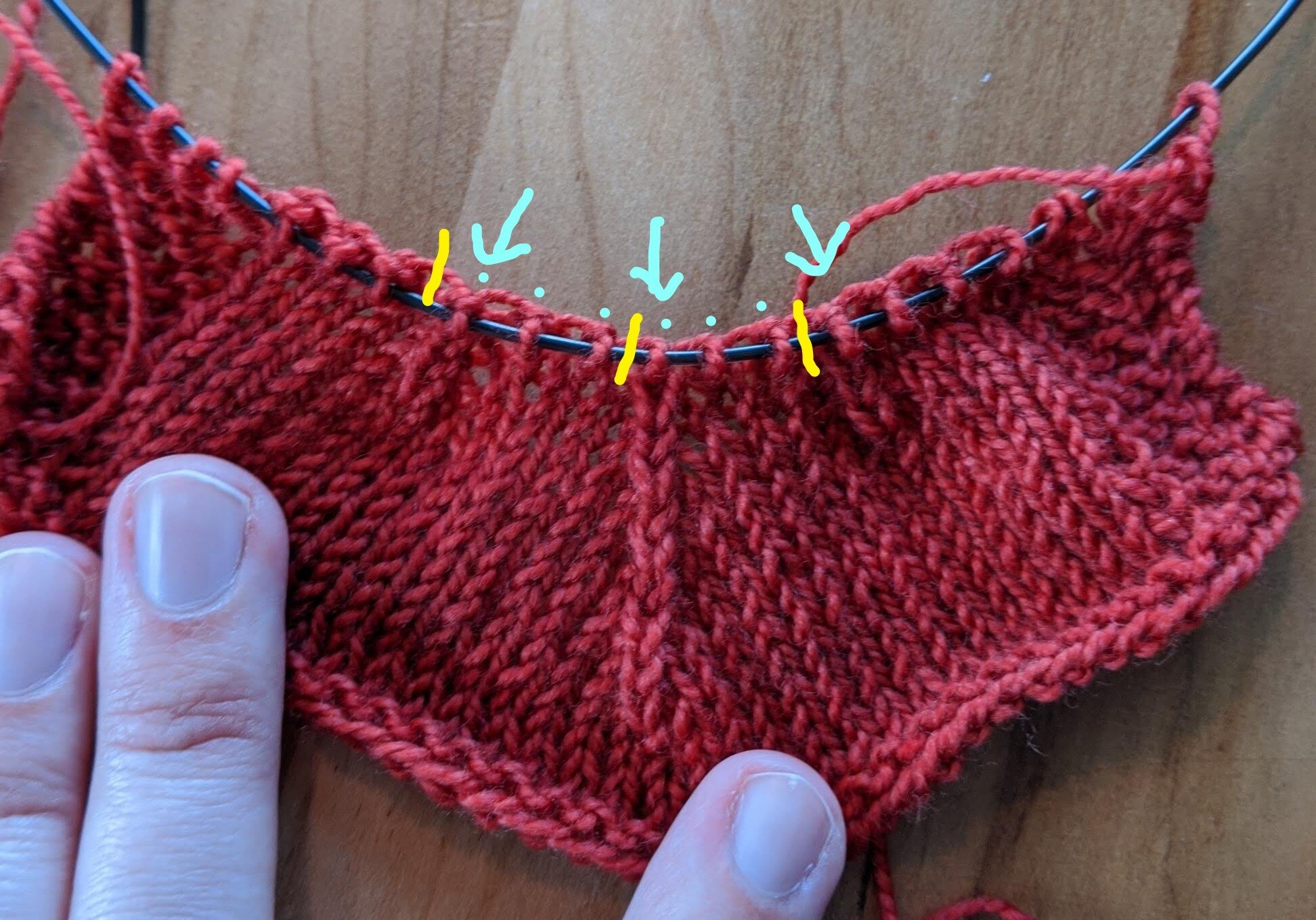I’m happy to announce my first hat pattern is now available on Ravelry! The Little Bits Beanie was designed at the request of my partner, who needed a new hat to replace his well-worn and very hogged-out commercial knit hat. He wanted something neutral, but was open to some color, which turned out great because I have a LOT of fingering-weight scraps.
I picked Knit Pick’s Hawthorne partially because it feels less “warm” to the touch than something softer like a merino blend and partially because I have a fair amount of it in gray. The gauge is pretty loose, because Hawthorne is already an exceptionally dense yarn (100g = 400 yd / 366 m), and because he didn’t want a warm hat so much as a fashion hat. The scraps I picked were mostly of the lighter fingering weight variety, but the stripes are short enough that it’s not noticeable.
The original sample was knit with a nice long ribbing, but when I had him try it on he said he wanted a snugger brim, so I dropped another needle size and opted for a folded brim, which creates even more negative ease on account of being double-thick fabric. As much as I hate the joining round on a folded brim because it’s so fiddly, I loooove how they look! Plus, it’s so decadent to have the nice and smooth knit side against your forehead. Having tried both types of brims, I figured both could stay in the final pattern.
For the stitch pattern on the hat itself, I spent many weeks waffling about it. I was originally trying to find something with slipped stitches, possibly slipping stitches with yarn in front to really enjoy the different CCs throughout the hat, but I eventually gave up on that idea because the slipped stitches might cause the stripes to pull or pucker differently than the rest of the hat. The pattern I eventually settled on was simple, but depending on whether you use the MC or the CC to make the purl stitches, it looks pretty different! Thus, another choose-your-own-adventure element was added. I’d love to try this same stitch pattern, but all over the hat rather than in stripes, just because the more repeats you do, the more it starts to look like a lattice (to me anyway).
The crown shaping incorporates another of my favorite techniques - the CDD. Not only do I like the look, but I like the efficiency of taking care of 2 decreases with one stitch! Working CDDs with stitch markers all mixed up in the stitches is a pain in the butt, so if you’re interested in trying it without stitch markers, I wrote a tutorial that will hopefully help!











